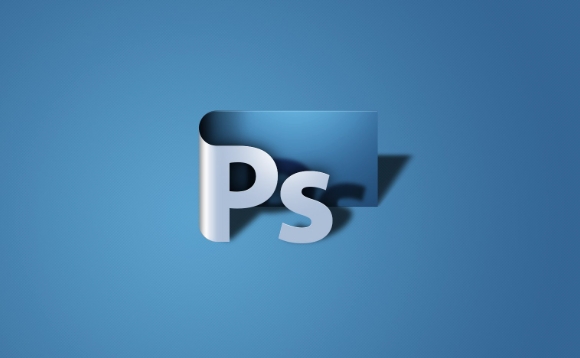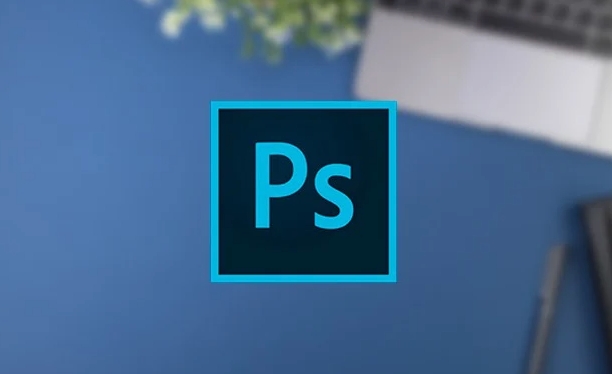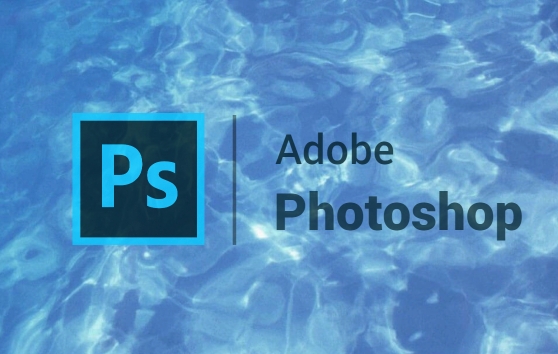How to make an image look like a painting in Photoshop
Jul 09, 2025 am 12:45 AMUsing Photoshop to convert photos into a natural and textured painting style is the key to using filters reasonably, superimposing textures, and adjusting colors and details. 1. Use artistic effect filters such as "oil painting" and "watercolor" in the "Filter Library" to adjust the parameters appropriately to quickly obtain the style effect; 2. Overlay the canvas or paper texture layers, and enhance the texture of the picture through "Soft Light" or "Overall" blending mode; 3. Adjust the color and contrast through tools such as "Hue/Saturation", "Curve", and "Color Balance" to enhance the overall atmosphere; 4. Finally, use "Intelligent Sharpening", "Liquefaction" and brush tools to enhance the edges and brushstrokes, making the picture more hand-painted. Each step should be kept natural and avoid over-treatment.

Open Photoshop and it is not difficult to turn photos into painting style, but the key is to make the effect natural and textured. The key is to select the right filter and adjust the details to avoid looking too "fake" or like AI images generated with one click. Below I will share a few practical methods that are suitable for most photos.

Use filters: Quickly produce effects
Photoshop comes with many filters that can simulate painting style, such as "oil painting effect", "watercolor", "dry brush", etc. These filters can be found in the "Filter Library".

- Path : Menu Bar → Filter → Stylized → Filter Library
- There are many options under "art effect", such as "oil painting", "watercolor paper", "color pencil", etc., you can try it
- Don't adjust the parameters too hard, just be moderate, otherwise it will be easy to be distorted.
This method is suitable for those who want to see results quickly, especially newbies who are not very familiar with PS.
Manual overlay texture: more textured
If you want the image to be more like a real painting than a simple filter to process it, consider overlaying a canvas or paper texture.

Operation steps:
- Prepare a picture of canvas texture (you can find free resources online)
- Put the texture layer on the original image and adjust the blending mode to "Soft Light" or "Overall"
- Reduce transparency appropriately to make the texture appear and disappear
- You can use a mask to erase locally to preserve the texture of key areas
The advantage of doing this is that the picture is more layered and visually closer to the real painting.
Adjust color and contrast: enhance overall atmosphere
After the photo changes its style, the color often appears "flat". At this time, you need to manually adjust the color to enhance the atmosphere of the picture.
Recommended operations:
- Use Hue/Saturation to adjust the layer to slightly increase saturation
- Add the Curve adjustment layer, pull the S-shaped curve a little bit, and add comparison
- If it is in the oil painting style, you can use "Color Balance" to fine-tune the color tendency of shadows and highlights.
Don’t over-treat this step, keeping it natural is the key.
Detail reinforcement: Don't ignore edges and brushstrokes
The final step is to improve the details, especially edge clarity and simulate the feel of the brushstroke.
You can try:
- Use "Smart Sharpening" to slightly strengthen the edges, don't be too strong, otherwise it will appear dirty
- Use the Liquefaction tool to fine-tune the contours of the character's facials to make the lines smoother
- Use the brush tool to add some handmade brushstrokes (if there is brush material)
This part is icing on the cake, and doing well will make the entire work more "hand-painted".
Basically these are the methods. It is not particularly complicated, but you need to pay attention to your sense of measure every step and don’t be greedy for too much and seek speed. As long as you adjust patiently, ordinary photos can also become artistic painting styles.
The above is the detailed content of How to make an image look like a painting in Photoshop. For more information, please follow other related articles on the PHP Chinese website!

Hot AI Tools

Undress AI Tool
Undress images for free

Undresser.AI Undress
AI-powered app for creating realistic nude photos

AI Clothes Remover
Online AI tool for removing clothes from photos.

Clothoff.io
AI clothes remover

Video Face Swap
Swap faces in any video effortlessly with our completely free AI face swap tool!

Hot Article

Hot Tools

Notepad++7.3.1
Easy-to-use and free code editor

SublimeText3 Chinese version
Chinese version, very easy to use

Zend Studio 13.0.1
Powerful PHP integrated development environment

Dreamweaver CS6
Visual web development tools

SublimeText3 Mac version
God-level code editing software (SublimeText3)

Hot Topics
 How is Wasserstein distance used in image processing tasks?
Jan 23, 2024 am 10:39 AM
How is Wasserstein distance used in image processing tasks?
Jan 23, 2024 am 10:39 AM
Wasserstein distance, also known as EarthMover's Distance (EMD), is a metric used to measure the difference between two probability distributions. Compared with traditional KL divergence or JS divergence, Wasserstein distance takes into account the structural information between distributions and therefore exhibits better performance in many image processing tasks. By calculating the minimum transportation cost between two distributions, Wasserstein distance is able to measure the minimum amount of work required to transform one distribution into another. This metric is able to capture the geometric differences between distributions, thereby playing an important role in tasks such as image generation and style transfer. Therefore, the Wasserstein distance becomes the concept
 Java development: how to implement image recognition and processing
Sep 21, 2023 am 08:39 AM
Java development: how to implement image recognition and processing
Sep 21, 2023 am 08:39 AM
Java Development: A Practical Guide to Image Recognition and Processing Abstract: With the rapid development of computer vision and artificial intelligence, image recognition and processing play an important role in various fields. This article will introduce how to use Java language to implement image recognition and processing, and provide specific code examples. 1. Basic principles of image recognition Image recognition refers to the use of computer technology to analyze and understand images to identify objects, features or content in the image. Before performing image recognition, we need to understand some basic image processing techniques, as shown in the figure
 How to deal with image processing and graphical interface design issues in C# development
Oct 08, 2023 pm 07:06 PM
How to deal with image processing and graphical interface design issues in C# development
Oct 08, 2023 pm 07:06 PM
How to deal with image processing and graphical interface design issues in C# development requires specific code examples. Introduction: In modern software development, image processing and graphical interface design are common requirements. As a general-purpose high-level programming language, C# has powerful image processing and graphical interface design capabilities. This article will be based on C#, discuss how to deal with image processing and graphical interface design issues, and give detailed code examples. 1. Image processing issues: Image reading and display: In C#, image reading and display are basic operations. Can be used.N
 Application of AI technology in image super-resolution reconstruction
Jan 23, 2024 am 08:06 AM
Application of AI technology in image super-resolution reconstruction
Jan 23, 2024 am 08:06 AM
Super-resolution image reconstruction is the process of generating high-resolution images from low-resolution images using deep learning techniques, such as convolutional neural networks (CNN) and generative adversarial networks (GAN). The goal of this method is to improve the quality and detail of images by converting low-resolution images into high-resolution images. This technology has wide applications in many fields, such as medical imaging, surveillance cameras, satellite images, etc. Through super-resolution image reconstruction, we can obtain clearer and more detailed images, which helps to more accurately analyze and identify targets and features in images. Reconstruction methods Super-resolution image reconstruction methods can generally be divided into two categories: interpolation-based methods and deep learning-based methods. 1) Interpolation-based method Super-resolution image reconstruction based on interpolation
 In-depth analysis of the working principles and characteristics of the Vision Transformer (VIT) model
Jan 23, 2024 am 08:30 AM
In-depth analysis of the working principles and characteristics of the Vision Transformer (VIT) model
Jan 23, 2024 am 08:30 AM
VisionTransformer (VIT) is a Transformer-based image classification model proposed by Google. Different from traditional CNN models, VIT represents images as sequences and learns the image structure by predicting the class label of the image. To achieve this, VIT divides the input image into multiple patches and concatenates the pixels in each patch through channels and then performs linear projection to achieve the desired input dimensions. Finally, each patch is flattened into a single vector, forming the input sequence. Through Transformer's self-attention mechanism, VIT is able to capture the relationship between different patches and perform effective feature extraction and classification prediction. This serialized image representation is
 PHP study notes: face recognition and image processing
Oct 08, 2023 am 11:33 AM
PHP study notes: face recognition and image processing
Oct 08, 2023 am 11:33 AM
PHP study notes: Face recognition and image processing Preface: With the development of artificial intelligence technology, face recognition and image processing have become hot topics. In practical applications, face recognition and image processing are mostly used in security monitoring, face unlocking, card comparison, etc. As a commonly used server-side scripting language, PHP can also be used to implement functions related to face recognition and image processing. This article will take you through face recognition and image processing in PHP, with specific code examples. 1. Face recognition in PHP Face recognition is a
 Scale Invariant Features (SIFT) algorithm
Jan 22, 2024 pm 05:09 PM
Scale Invariant Features (SIFT) algorithm
Jan 22, 2024 pm 05:09 PM
The Scale Invariant Feature Transform (SIFT) algorithm is a feature extraction algorithm used in the fields of image processing and computer vision. This algorithm was proposed in 1999 to improve object recognition and matching performance in computer vision systems. The SIFT algorithm is robust and accurate and is widely used in image recognition, three-dimensional reconstruction, target detection, video tracking and other fields. It achieves scale invariance by detecting key points in multiple scale spaces and extracting local feature descriptors around the key points. The main steps of the SIFT algorithm include scale space construction, key point detection, key point positioning, direction assignment and feature descriptor generation. Through these steps, the SIFT algorithm can extract robust and unique features, thereby achieving efficient image processing.
 How to use AI technology to restore old photos (with examples and code analysis)
Jan 24, 2024 pm 09:57 PM
How to use AI technology to restore old photos (with examples and code analysis)
Jan 24, 2024 pm 09:57 PM
Old photo restoration is a method of using artificial intelligence technology to repair, enhance and improve old photos. Using computer vision and machine learning algorithms, the technology can automatically identify and repair damage and flaws in old photos, making them look clearer, more natural and more realistic. The technical principles of old photo restoration mainly include the following aspects: 1. Image denoising and enhancement. When restoring old photos, they need to be denoised and enhanced first. Image processing algorithms and filters, such as mean filtering, Gaussian filtering, bilateral filtering, etc., can be used to solve noise and color spots problems, thereby improving the quality of photos. 2. Image restoration and repair In old photos, there may be some defects and damage, such as scratches, cracks, fading, etc. These problems can be solved by image restoration and repair algorithms






